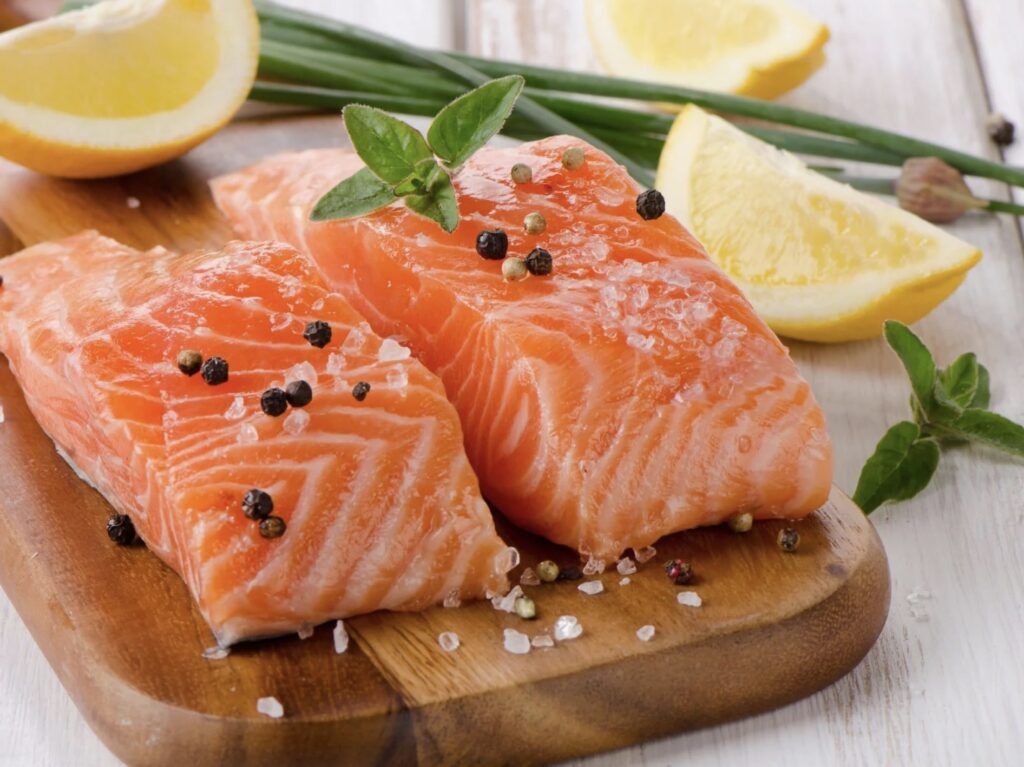When we talk about “superfoods” for kids, seafood doesn’t always get the limelight. But it should! Seafood is truly a nutritional powerhouse that supports everything from strong muscles to sharp brains, and it’s one of the best foods to help kids grow healthy and stay energized.
Serving seafood to kids can be tricky – which types are the best, where they come from, how to cook them, and whether they will even like them! Let’s break it down now.
The Nutritional Goldmine in Your Kid’s Every Bite
First up, let’s talk about nutrients. It’s amazing how much essential nutrition is packed into a single piece of fish or seafood. Seafood contains high-quality protein, omega-3 fatty acids, and a range of essential vitamins that support kids’ development. And the best part? It’s naturally lower in unhealthy fats compared to other protein sources, making it a lean, healthy choice.
Omega-3 Fatty Acids: Omega-3s are like brain fuel, great for kids and adults alike. Studies show that kids who consume seafood regularly tend to show better cognitive performance and concentration. This is huge for kids who are growing and learning new things every day. These Omega-3s are also anti-inflammatory, supporting heart health and even reducing symptoms of ADHD in some kids. In the local Hong Kong markets, groupers, cods and halibuts are common fish types for the locals’ daily meals. It’s incredible to think that one serving of fish can offer such powerful brain-boosting effects.
Protein for Growing Bodies: Seafood is loaded with high-quality protein, which is essential for building muscles, maintaining strong tissues, and supporting active kids. Compared to red meats like beef, seafood like fish and mussels has a similar protein level of 20g per every 100g, while having a much lower level of fats. Seafood is also easier for young bodies to digest, which can be a bonus for picky eaters or kids with sensitive stomachs.
Vitamins and Minerals: Seafood contains key vitamins like B-6, B-12, and D. Vitamin B-6 is crucial for metabolism and energy levels – essential for all that running around kids love to do. Vitamin B-12 supports a healthy nervous system, which is critical as kids grow and develop. Vitamin D, a standout nutrient, is actually quite difficult to find in everyday foods but is abundant in fatty fish like salmon.


Choosing the Right Seafood for Kids
Of course, not all seafood is created equal. While the nutrients are phenomenal, it’s important to choose high-quality seafood to avoid contaminants. Some fish, like tuna or swordfish, may contain higher levels of mercury, which isn’t ideal for growing children.
It is important to focus on “clean” fish options like salmon and cod. These fish are naturally lower in mercury and heavy metals and are typically rich in omega-3s. They are also really delicious, regardless of the ways they are being cooked. Just a little lemon and butter can whip up a beautifully pan-fried or baked fish fillet within minutes. (See recipe idea)
And then there’s the importance of sustainable sourcing. Always look for seafood that’s sustainably farmed or wild-caught to ensure it’s free from antibiotics, hormones, or other additives often used in overcrowded fish farms. For parents, knowing where your seafood comes from can be as reassuring as knowing what’s in it. There are a variety of sustainability labels like MSC, BAP and ASC that one can look out for.

Encouraging Kids to Love Seafood
While most kids love seafood naturally, some kids can use a bit of encouragement, especially if they’re new to it. A trick is to cook it with them, letting them help season the fish or choose the herbs to use. You can also add small amounts of shrimp or fish pieces into their familiar pasta, rice or soup to make it familiar.
Seafood is a nutritional powerhouse for kids, offering a treasure trove of benefits from brain-boosting omega-3s to muscle-building protein and essential vitamins. With the right choices and cooking methods, seafood can be a delicious, healthy addition to family meals that helps support kids’ growth and development.









